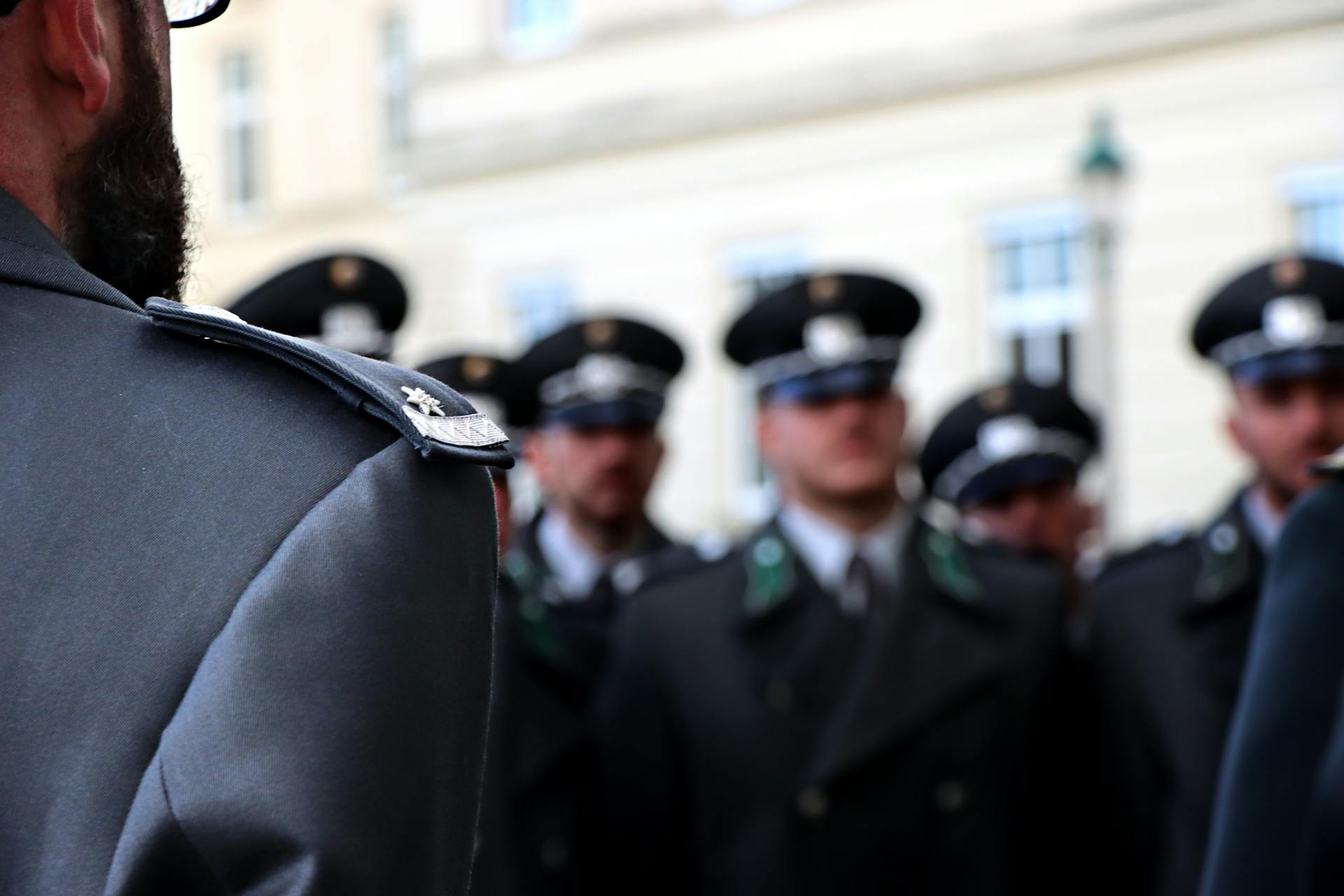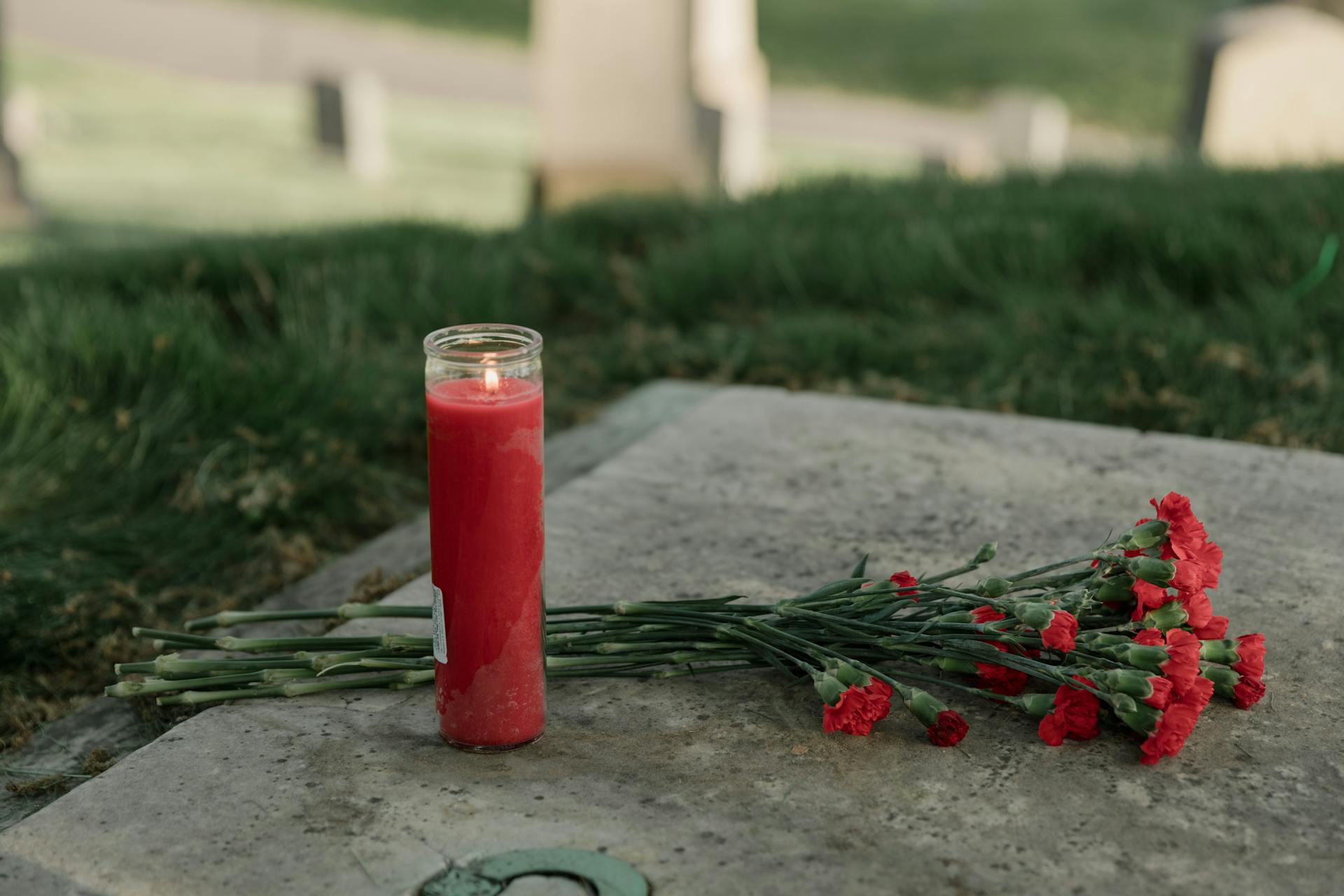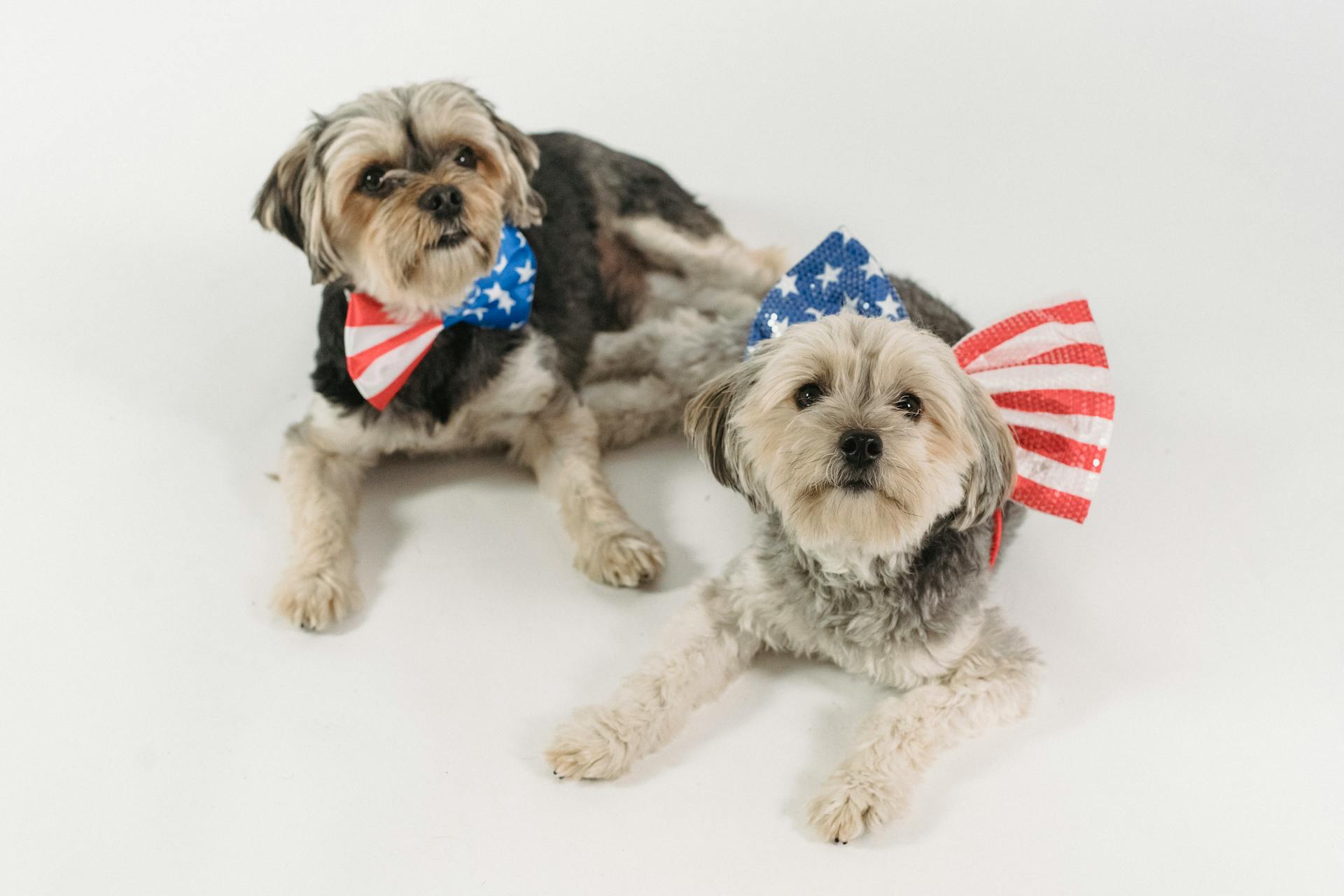
Sergeant Stubby was a Pit Bull Terrier who served in World War I. He is considered one of the most decorated war dogs in history.
Stubby was found by Private John Robert Conroy in 1917, and he quickly became a mascot for the 102nd Infantry Regiment.
Stubby's duties included detecting gas attacks, which he could sense before they occurred.
Stubby's keen sense of smell saved countless lives, earning him numerous awards and recognition.
Early Life
Sergeant Stubby was a stray dog who wandered onto a military training lot in New Haven, Connecticut, in July 1917. He was initially described as a Boston Terrier or "bull terrier" mutt, and his brindle-patterned coat likely owed some of its heritage to the evolving Boston Terrier breed.
Stubby was found on the Yale University campus, where he hung around the 102nd Infantry as they trained. The soldiers, including Corporal James Robert Conroy, grew fond of him and eventually hid him on board the troop ship when it was time to ship out.
Worth a look: Rat Terrier Breed History
As they arrived in France, Stubby was discovered by Conroy's commanding officer, who was impressed by the dog's salute. This allowed Stubby to stay on board with the unit, and he went on to become an official part of the 102nd Infantry.
Stubby's early life was marked by his ability to charm his way into the hearts of the soldiers. He even learned to salute, a skill that would serve him well in his future military career.
Military Service
Sergeant Stubby served with the 102nd Infantry Regiment in the trenches in France for 18 months, participating in four offensives and 17 battles. He entered combat on February 5, 1918, at Chemin des Dames, north of Soissons, and was under constant fire, day and night, for over a month.
Stubby was wounded in the foreleg by retreating Germans throwing hand grenades in April 1918, but he recovered and returned to the trenches. He was later injured by mustard gas, which required him to wear a specially designed gas mask to protect him.
Stubby was solely responsible for capturing a German spy in the Argonne, leading to his unit's commander nominating him for the rank of sergeant. He was later injured again, in the chest and leg by a grenade, and ultimately had two wound stripes.
The Battlefield
Stubby's time on the battlefield was marked by his incredible bravery and loyalty. He served with the 102nd Infantry Regiment in the trenches in France for 18 months and participated in four offensives and 17 battles.
He entered combat on February 5, 1918, at Chemin des Dames, north of Soissons, and was under constant fire, day and night, for over a month. Stubby's keen sense of smell helped him distinguish friend from foe, and he alerted medics to the cries of wounded soldiers.
In April 1918, Stubby was wounded in the foreleg by retreating Germans throwing hand grenades. He was sent to the rear for convalescence, but continued to improve morale with his presence.
Stubby's ability to recognize danger was crucial during a gas attack, when he roused soldiers from sleep and likely saved many lives. His keen nose for gas also helped him avert an attack on a French village.
During a grenade attack at Chateau-Thierry, Stubby took shrapnel in his chest and in one leg. Private Conroy carried his canine companion to a field hospital, where Stubby needed surgery and a month's recovery.
Stubby's most distinguished act was catching a German spy by harassing and biting him until his fellow soldiers arrived and captured him. For this feat, Stubby was promoted to the honorary rank of sergeant, becoming the first dog to receive a rank in the U.S. armed forces.
Sergeant Stubby
Sergeant Stubby was a stray bull terrier mix who wandered onto a military training lot in New Haven, Connecticut, where he met Private J. Robert Conroy.
Stubby charmed commanding officers into letting him stay with the Yankee Division all the way to the front lines, where he quickly proved his worth on the battlefields. He distinguished friend from foe by their familiar language and smells, alerting medics to the cries of wounded soldiers.
In his first year of battle, Stubby was injured by mustard gas, but he recovered and returned to the trenches with a specially designed gas mask to protect him. He became adept at warning his unit of mustard gas attacks and locating wounded soldiers in no man's land.
Stubby was solely responsible for capturing a German spy in the Argonne, leading to his unit's commander nominating him for the rank of sergeant. He was the first dog to receive a rank in the U.S. armed forces.
During a grenade attack at Chateau-Thierry, Stubby took shrapnel in his chest and leg, but he continued to lift the spirits of the wounded even during his convalescence. He ultimately had two wound stripes.
Expand your knowledge: When Did Labradoodles Originate
After the War
After the war, Stubby became a celebrity and marched in many parades across the country.
He met three U.S. Presidents: Woodrow Wilson, Calvin Coolidge, and Warren G. Harding.
Stubby appeared on vaudeville stages owned by Sylvester Z. Poli and was awarded lifetime memberships to the American Legion and the YMCA.
In 1921, General of the Armies John J. Pershing presented a gold medal from the Humane Education Society to Stubby, which was a notable event.
Stubby attended Georgetown University Law Center in 1921, along with his owner Conroy, and became the Georgetown Hoyas' team mascot.
He would nudge a football around the field during halftime, entertaining the fans.
Stubby died in his sleep in March 1926, at an old age.
Legacy
Sergeant Stubby received an impressive obituary in the New York Times following his death in 1926. The obituary was a whopping half a page, much longer than the average obituary of notable people at that time.
He was also the subject of a portrait by renowned artist Charles Ayer Whipple. This portrait is a testament to Stubby's lasting impact on art and history.
Stubby's legacy extended to the Brave Beasts exhibit at the Legermuseum in Delft, The Netherlands, where he was featured from 2008 to 2009. This exhibit showcased Stubby's bravery and importance in the war.
In 2006, a ceremony was held on Armistice Day to commemorate Sergeant Stubby, and a brick was placed in the Walk of Honor at the Liberty Memorial in Kansas City. This brick serves as a reminder of Stubby's heroic actions.
Stubby's story has been told in at least four books, making him a beloved and enduring figure in American history. His life and legacy continue to inspire new generations.
Frequently Asked Questions
Was Sergeant Stubby a pitbull?
Sergeant Stubby was likely a bull terrier type dog, which would be classified as a pit bull in modern times. His exact breed is unclear, but his appearance is consistent with a pit bull mix.
How did Sergeant Stubby pass away?
Sergeant Stubby passed away in his sleep in March 1926. He was later preserved and his remains are now part of a taxidermy mount.
Did Sergeant Stubby catch a German spy?
Yes, Sergeant Stubby caught a German spy by chasing him down and biting his legs, allowing his human comrades to capture the spy. This heroic act showcased Stubby's keen instincts and bravery.
Is Sergeant Stubby a true story?
Yes, Sergeant Stubby is a true story about a heroic American dog who served in World War I. He was a real-life mascot of the 102nd Infantry Regiment and received numerous decorations for his bravery.
Did Sergeant Stubby salute?
Yes, Sergeant Stubby saluted by putting his right paw on his right eyebrow when his fellow soldiers executed a salute. This unique gesture earned him a special place in the camp.
Featured Images: pexels.com


